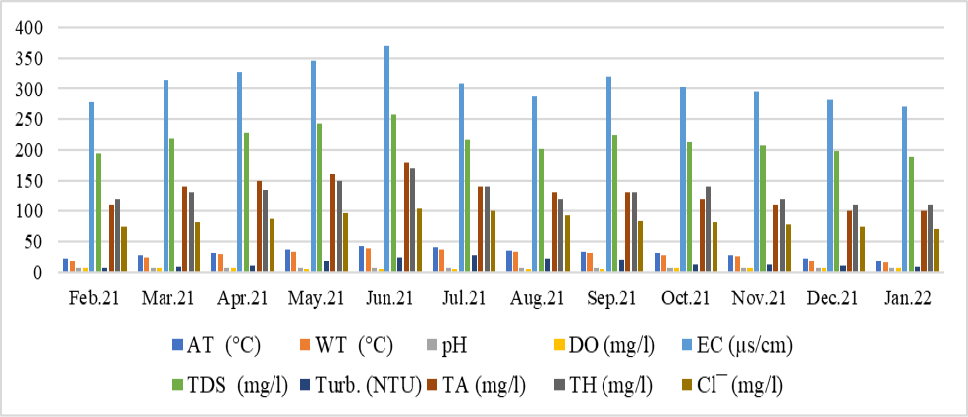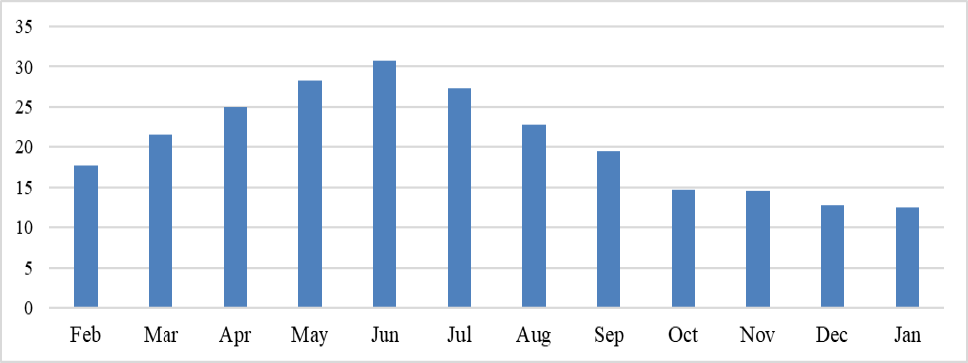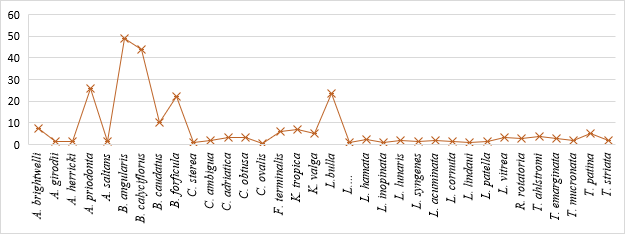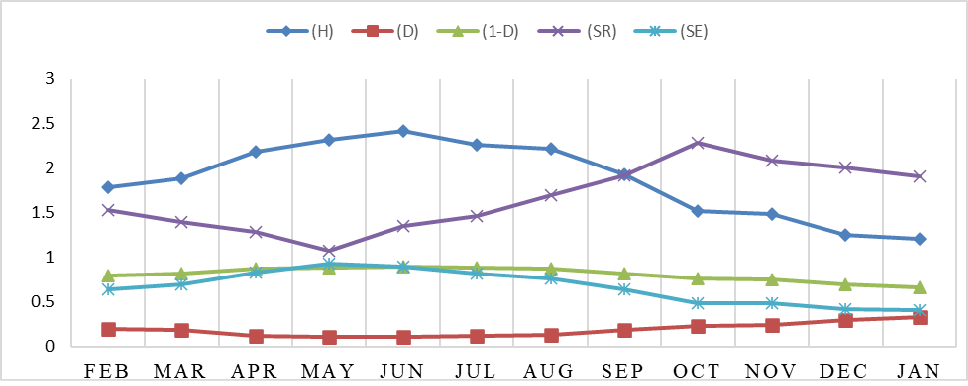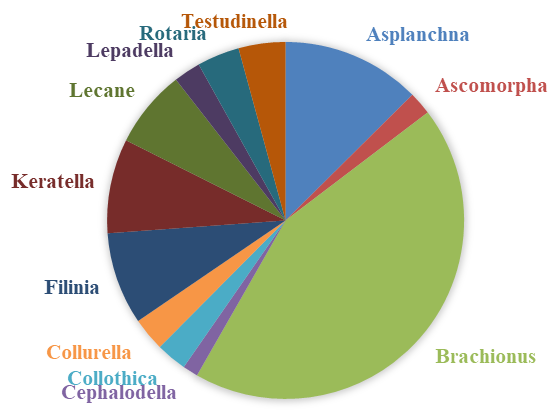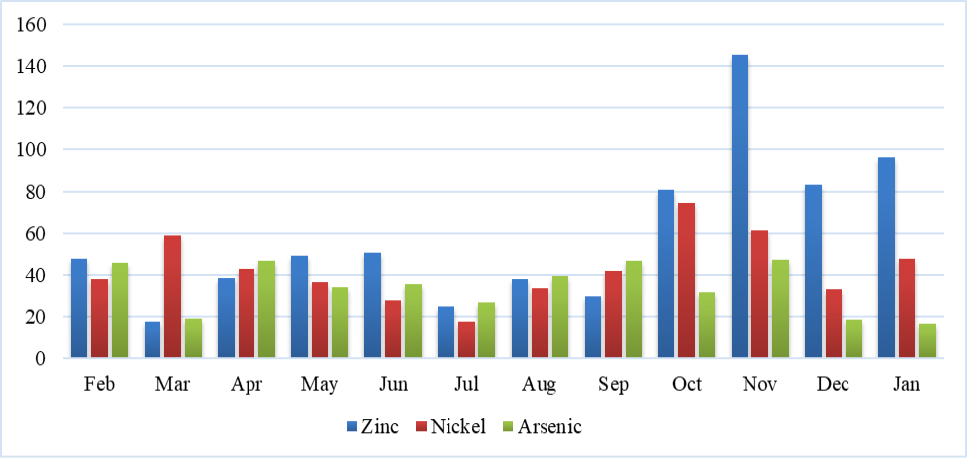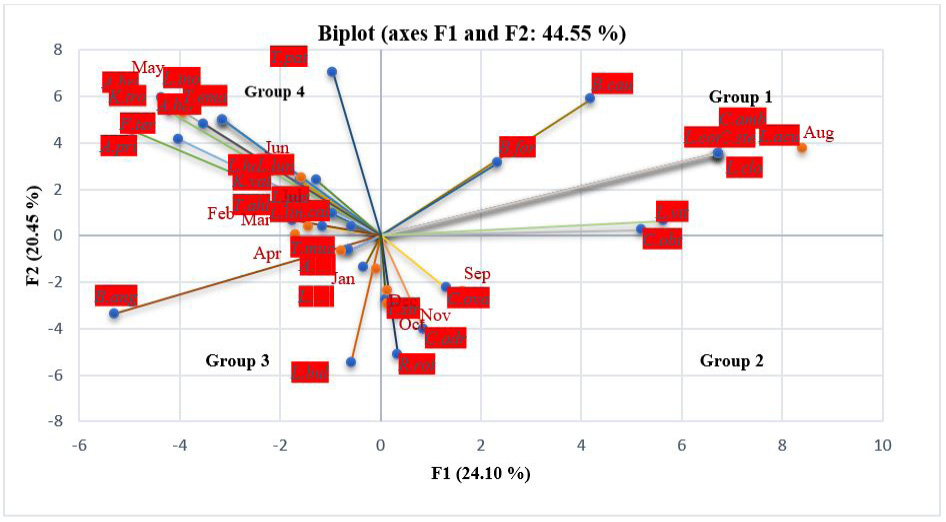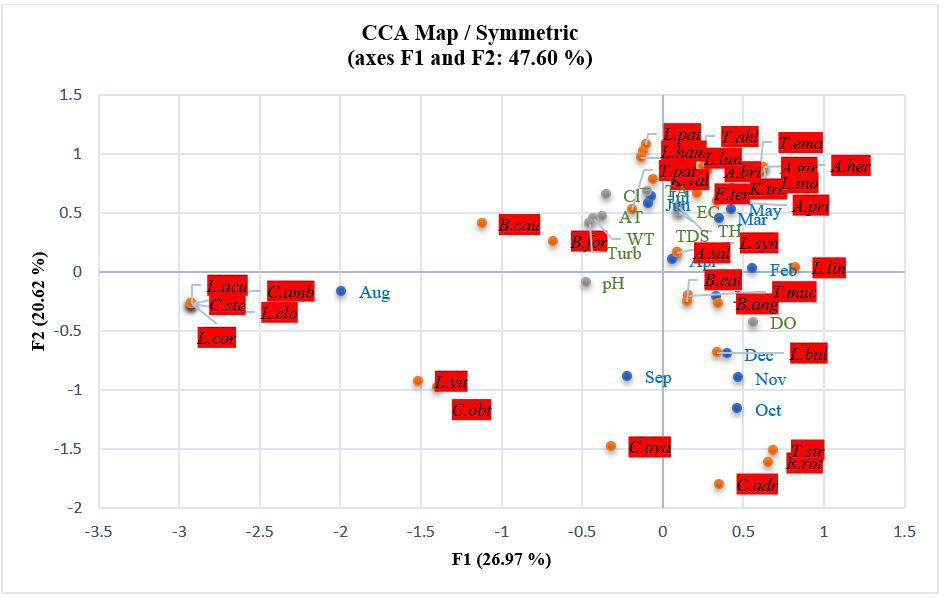Population Dynamics of Rotifers as Influenced by Physicochemical Parameters and Heavy Metals at Khanki Headworks, Gujranwala, Pakistan
Population Dynamics of Rotifers as Influenced by Physicochemical Parameters and Heavy Metals at Khanki Headworks, Gujranwala, Pakistan
Muhammad Ahsan Raza1,2*, Nabila Roohi2, Abdul Qayyum Khan Sulehria3 and Muhammad Khalil Ahmad Khan4
Variations of different physicochemical parameters, temperature (°C), pH, dissolved oxygen (DO), electrical conductivity (EC), total hardness (TH), turbidity (NTU), total alkalinity (TA), total dissolved solids (TDS), chlorides (mg/L) at Khanki Headworks.
Population density of rotifers on monthly basis from Khanki Headworks.
Relative abundance of rotifer species isolated from Khanki Headworks.
Variations of diversity indices of rotifers isolated from Khanki Headworks. H, Shannon-weaver diversity index; D, Simpson index of dominance; 1-D, Simpson index of diversity; SR, species richness; SE, species evenness.
Percentage representation of rotifer genera isolated from Khanki Headworks.
Relative concentrations of heavy metals collected from Khanki Headworks.
CCA ordination triplot depicting the rotifer environment relationships at Khanki Headworks.







